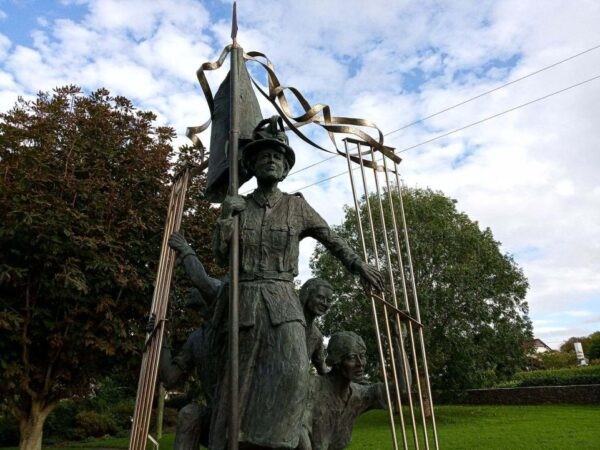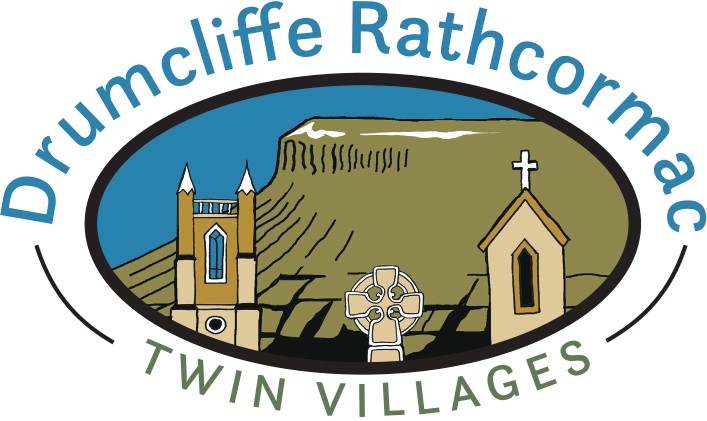Countess Markievicz Memorial Rathcormac
Unveiled in 2003, the 4m tall statue of Markievicz and surrounding figures is the work of Galway-born sculptor John Coll.
Located in Rathcormac park is a statue of Countess Constance Markievicz (1868-1927), Irish nationalist, suffragette, politician, and champion of the poor. Born Constance Gore-Booth, the daughter of local land owner Sir Henry Gore-Booth, she spent her childhood living in nearby Lissadell House, before moving to London and later Paris to study art and where she met her future husband Count Casimir Markievicz.


Becoming interested in Irish nationalist politics, Constance soon joined Arthur Griffith’s Sinn Fein and in 1909 along with Bulmer Hobson she founded the nationalist Boy Scout organisation, Na Fianna Éireann.
An active participant in the 1916 Easter Rising, Constance was interned in Kilmainham Gaol and sentenced to death for her part in the Rising, though this was commuted to life in prison and she was later released as part of the general amnesty in 1917. While in prison again, this time for anti-conscription activities, she was elected in the 1918 general election as a Sinn Fein candidate and, as a result, became the first woman elected to the British Parliament.

Joining the majority of Irish MPs as member of the First Dáil Éireann, she was appointed as Minister for Labour in the First Dail, the first and only Irish female Cabinet Minister until 1979. Opposing the Anglo Irish Treaty, Constance left government in January 1922 along with Éamon de Valera and others. She was active in supporting the Republican cause in the Irish Civil War and was returned for the Dublin South constituency in the 1923 general election. Along with her Republican colleagues, she refused to take her seat and was imprisoned again for her staunch republican views. In 1926 she joined de Valera’s Fianna Fail party and in June 1927 was re-elected to the 5th Dáil as a candidate for the new party. However, weeks later on the 15th of July 1927 Constance died, age 59.
Described by Eamon De Valera at her funeral as “the lover of the poor”, more than 250,000 attended her funeral cortege through the streets of Dublin. She is buried in Glasnevin Cemetery. Made a freeman of Sligo in August 1917, Constance is commemorated by a bust in St. Stephen’s Green and was featured on a postage stamp in 1968. In William Butler Yeats’ poem, “In Memory of Eva Gore-Booth and Con Markievicz”, the sisters Eva.
